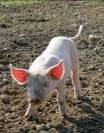Four examples of concepts
Convenience: pork chop snacks
|
Pork chop snacks - any time ... anywhere! Offered in grills and diners, but also in retail
|
Health: added omega-3
|
Healthy tenderloin steak Eat your favorite steak without worrying about your health! Protected by new packaging, added omega-3 fatty acids support your nutritional balance and give you energy for the day! A great-looking, tender steak that enriches your day and impresses your guests! Product information:
Target users:
|
Animal welfare: quality labelling about animal welfare
|
Pork from happy pigs We take animal welfare seriously. We guarantee that our pigs are treated in the best way and with minimum intervention. Happiness and well-being that you can taste! This product is certified to originate only from a selected group of farms that apply the highest standards of livestock treatment. Product information:
Target users:
|
Sustainability: carbon footprint labelling
|
Pork produced with low carbon emissions This product has a carbon footprint that shows reduced carbon emissions compared to the industry average, resulting from a highly modernized production and processing chain. Product information:
Target users:
|



